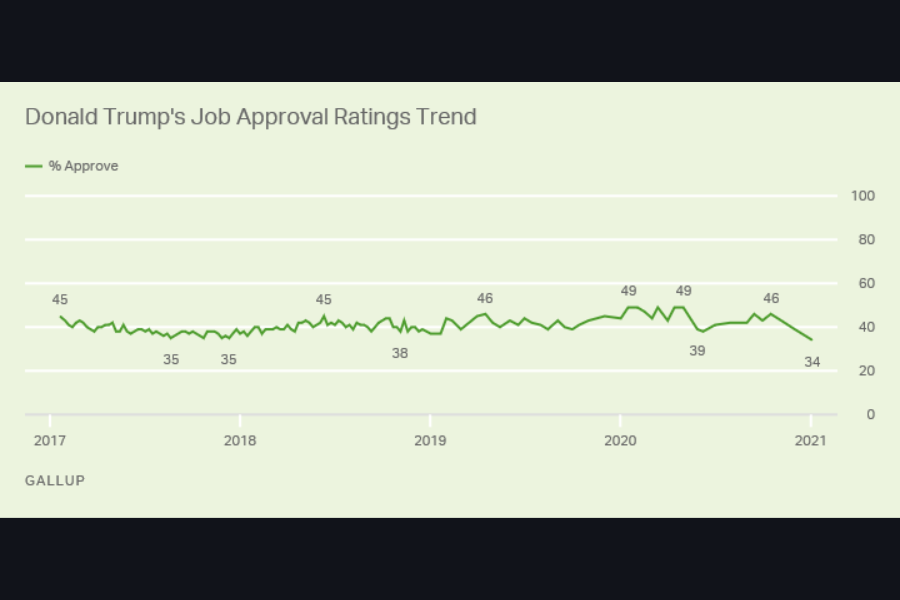Navigating High Risk: How HighRiskPay.com Supports Risky Businesses
What is a High-Risk Merchant Account?
In the realm of financial transactions, a high-risk merchant account stands as a specialized conduit facilitating the acceptance of payments via credit and debit cards for entities categorized within the high-risk spectrum. Traditional facilitators of merchant accounts often exhibit reluctance towards extending their services to such entities, primarily due to factors like an elevated incidence of chargebacks, industry standing, individual creditworthiness, or the nascent nature of the business.
Acquisition of a high-risk merchant account enables these entities to persist in the acceptance of card-based payments, albeit subject to certain stipulations and the potential imposition of escalated charges. Prior to finalizing an agreement with a service provider, it becomes imperative for the entity to diligently scrutinize and comprehend the terms and conditions governing the proposed account.
How are Businesses Determined to Be High-Risk?
In the realm of commerce, the classification of a company as high-risk falls within the purview of the merchant account provider. Elements influencing this categorization may fluctuate among providers but commonly orbit around sectoral peril, fiscal track record, tenure in operation, and promotional tactics.
Various sectors frequently deemed high-risk encompass virtual transactions, wagering, mature amusement, and electronic nicotine dispensation. Enterprises within these spheres may encounter escalated incidence of transaction reversals or jeopardy to their standing, prompting their designation as high-risk.
Furthermore, nascent enterprises, those grappling with prior fiscal setbacks, or entities offering dubious services may similarly garner the high-risk label. It merits mention that these benchmarks are not immutable and are liable to differentiation among providers.
Industries Considered High-Risk
Several industries are frequently categorized by merchant account providers as high-risk. Chargebacks, fraud, and reputational hazards are common problems for these industries. These are a few instances:
Online Sales
Because of the nature of online transactions and the possibility of greater chargeback rates, e-commerce sites, eBay sellers, and Amazon storefronts are sometimes seen as high-risk businesses.
Gambling
Companies that engage in sports betting, casinos, or internet gambling are usually categorized as high-risk because of the possibility of chargebacks and the inherent risk of fraud.
Adult Entertainment
Because of the possibility for chargebacks and reputational hazards, adult stores, escort services, and other firms in the adult entertainment sector are sometimes classified as high-risk.
Electronicz Cigarettes
Vendors of electronic cigarettes and associated goods are categorized as high-risk due to regulatory obstacles and possible chargeback hazards.
These are but a handful of the several industries that, depending on their unique traits and risk considerations, might be regarded as high-risk.
Benefits and Drawbacks of High-Risk Merchant Accounts
Employing a high-risk merchant account has advantages as well as disadvantages. When choosing to pursue this kind of account, it is imperative to take these aspects into mind.
Benefits of High-Risk Merchant Accounts
Ability to accept credit and debit card payments: Businesses can increase customer satisfaction and revenue by providing simple payment options to their customers through the use of a high-risk merchant account.
Access to payment processing services:Businesses may be turned down by traditional merchant account providers because of their high-risk status. These companies are the focus of high-risk merchant account providers, who guarantee that these companies have access to payment processing services.
Increased approval rates:Businesses with poor credit or other risk concerns are frequently approved at a higher rate by high-risk merchant account providers. This increases the likelihood that firms will be granted a merchant account.
Chargeback management: Businesses with poor credit or other risk concerns are frequently approved at a higher rate by high-risk merchant account providers. This increases the likelihood that firms will be granted a merchant account.
Drawbacks of High-Risk Merchant Accounts
In the realm of monetary transactions, the realm of high-risk merchant accounts unveils its peculiarities, adorned with elevated fees and levies. These accounts, in their peculiarity, often present a tableau of augmented transactional fees, recurrent dues, and fortuitous impositions, juxtaposed against their conventional counterparts. It behooves the discerning entrepreneur to meticulously peruse the contractual stipulations, unraveling the intricate web of expenses entwined with such an account.
Embarking further into this esoteric domain, one encounters the concept of rolling reserves. Certain purveyors of high-risk merchant accounts may exact the establishment of a rolling reserve, whereby a fraction of the establishment’s aggregate sales figures is sequestered to cushion against potential chargebacks or fiscal adversities. The ramifications of this practice resonate profoundly, exerting a palpable impact on the fluidity of monetary influx, particularly for establishments whose revenue streams are significantly curtailed.
Compounding the intricacies, the vista of high-risk merchant accounts is fraught with a dearth of alternatives. Establishments ensconced within this realm often find themselves contending with a paucity of choices when it comes to payment processing entities. Not all purveyors of financial services are amenable to accommodating high-risk enterprises, a circumstance that imposes constraints upon the breadth of options available.
Yet, notwithstanding these encumbrances, the mantle of a high-risk merchant account may yet bestow its benedictions upon establishments otherwise bereft of the capacity to embrace card-based transactions.
Finding the Right High-Risk Merchant Account Provider
It’s important to take a few things into account while looking for a high-risk merchant account provider to make sure you make the best decision for your company. Here are a few crucial things to remember:
Experience and Reputation
Look for providers who have a good reputation in the industry and a proven track record. Consider their years of experience, references from previous clients, and any honors or credentials they may have received from the sector.
Approval Rate

Verify the provider’s approval rate. A provider’s readiness to cooperate with enterprises in high-risk industries or with risk characteristics like bad credit is indicated by a high acceptance rate.
Fees & Charges
Review the provider’s charge structure and verify you understand all the costs associated with the account. To be sure you are receiving a fair deal, compare the fees with those of other providers.
Customer Support
Think about the provider’s degree of customer service. Seek suppliers who can help you with any problems or inquiries you may have with prompt, professional assistance.
Integration Options
In the event of specific integration requisites, such as interfacing with your electronic commercialism infrastructure or financial recordkeeping software, ensure that the provider furnishes compatible resolutions.
Thorough examination and juxtaposition of varied high-hazard merchant account providers shall facilitate a judicious determination, leading you to discover the appropriate collaborator for your enterprise.
Understanding Fees and Charges
It is important to be aware of the fees and costs related to utilizing a high-risk merchant account. Here are some typical expenses you could run into, though the precise fee schedule varies depending on the provider:
Transaction Fees
Every credit or debit card transaction handled through your high-risk merchant account carries a transaction fee. These costs may be expressed as a percentage of the transaction value or as a fixed charge.
Periodic Fees
Recurring fees are those that are invoiced on a regular basis, like a monthly or annual basis. These costs could include gateway fees, statement fees, or account maintenance fees.
Incidental Charges
Additional costs that could be spent for particular services or circumstances are known as incidental charges. Chargeback fees, retrieval request fees, and settlement fees are a few examples of these.
It’s crucial to go over the cost schedule that the high-risk merchant account provider sends you and get explanation on any charges or fees that don’t make sense. Knowing the costs up front will make it easier for you to budget and make plans.
Rolling Reserves & Chargeback Protection
As a risk management tactic, some high-risk merchant account providers could demand a rolling reserve. A rolling reserve is the amount of your total sales that the supplier sets aside in case there are chargebacks or losses.
The precise percentage deducted as a rolling reserve may differ based on the supplier and the level of risk deemed to be involved with your company. It is critical to comprehend the implications of the rolling reserve needs for your cash flow.
A rolling reserve might help suppliers avoid chargebacks to some extent, but it can also cause problems for companies, particularly those with little funding. Before committing to a high-risk merchant account, it is imperative to take into account the possible effects of a rolling reserve on the financial stability of your company.
Application & Approval Process
In comparison to conventional vendor accounts, the procedures for application and approval concerning high-risk vendor accounts might differ significantly. The ensuing fundamental stages exemplify what to expect:
Exploration and juxtaposition of suppliers: Initiate the process by conducting thorough research and contrasting various providers of high-risk vendor accounts to identify the most suitable one tailored to your enterprise’s requisites.
Compilation of requisite documentation: Assemble all essential documentation mandated for the application process. This compilation may encompass business permits, fiscal declarations, identification credentials, and any ancillary corroborative materials solicited by the provider.
Submission of the application: Conclude the submission of the application form furnished by the designated high-risk vendor account provider, enclosing the necessitated documentation.
Evaluation and scrutiny: The provider will scrutinize your application and gauge the magnitude of jeopardy linked with your enterprise. This assessment may entail credit evaluations, background assessments, and sectoral scrutiny.
Authorization or repudiation: Notification concerning the validation or repudiation of your application shall be disseminated. In the event of approval, you may proceed with the establishment of the account and its integration into your remittance processing mechanisms.
Configuration of the account: Collaborate with the provider to configure your high-risk vendor account, incorporating the calibration of remittance gateways, APIs, or any other indispensable incorporations.
Commencement of payment acceptance: Subsequent to the account’s establishment, commence the acceptance of credit and debit card remittances from your clienteles.
The temporal span of the application and endorsement procedure may fluctuate contingent on the provider and the intricacy of your enterprise. Certain providers proffer expeditious validations within 24 to 48 hours, whereas others may necessitate more extensive durations for scrutiny and assessment.
Tips for Success with a High-Risk Merchant Account
In traversing the terrain of a high-risk merchant account, one encounters an array of distinct hurdles, yet strategies exist to bolster the likelihood of triumph:
Enact robust countermeasures against deceit: Given the heightened vulnerability of high-risk enterprises to chicanery, it becomes imperative to deploy formidable anti-fraud strategies. Employ tools such as domicile authentication services, CVV verifications, and fraud identification systems to mitigate the peril of deceptive transactions.
Cultivate a culture of unparalleled client gratification: Elevated chargeback rates, a common quandary for high-risk endeavors, often stem from client discontent or disputes. Cultivating a reputation for unparalleled customer service can serve as a bulwark against chargebacks by promptly addressing client grievances and swiftly resolving conflicts.
Vigilantly monitor chargeback proportions: Maintaining a vigilant watch over chargeback proportions is paramount, necessitating preemptive measures to curtail their proliferation. Scrutinize the rationales behind chargebacks and undertake remedial actions to rectify any latent issues.
Adhere steadfastly to industry edicts: Ensuring strict adherence to pertinent industry statutes and benchmarks is non-negotiable. This entails compliance with legal requisites pertaining to age-restricted merchandise, privacy safeguards, and data fortification.
Scrutinize and harmonize financial statements: It behooves one to meticulously examine and harmonize merchant account statements at regular intervals to ascertain accuracy and unearth any anomalies or fraudulent activities.
Uphold financial equilibrium: Sustaining a high level of fiscal equilibrium is imperative for the perpetuation of approval in the realm of high-risk merchant accounts. Cultivate a robust cash flow and financial equilibrium to preclude any interruptions in payment processing services.
By assiduously adhering to these precepts, one can augment the triumph of their high-risk merchant account while concomitantly mitigating potential perils.
High-Risk Merchant Account Alternatives
In the realm of business transactions, while a high-stakes vendor account might resonate with certain enterprises, there exist alternate avenues to explore. Here lie a few substitutes to contemplate:
Facts
Consorts: Consorts like PayPal and Stripe extend their purview to furnish payment conduits across a spectrum of businesses, encompassing even those entrenched in high-risk domains. Nevertheless, such consortia may enforce constraints and stipulations upon select high-stakes ventures.
Overseas vendor accounts: A faction of enterprises may opt to delve into overseas vendor accounts, proffered by banks or payment facilitators domiciled in extraterritorial jurisdictions. These accounts may furnish distinct terms and clauses, albeit with additional nuances such as currency transmutation and regulatory adherence.
Auxiliary processors: Certain high-stakes ventures elect to engage auxiliary processors, honing in on catering to specific industries. These processors may harbor a deeper comprehension of the idiosyncratic hurdles confronted by high-stakes ventures, offering bespoke remedies.
When delving into alternatives to a high-risk vendor account, it is imperative to scrutinize the precise exigencies and prerequisites of one’s enterprise and elect the recourse that resonates most harmoniously with its objectives and hazard threshold.
Definition of High-Risk Merchant Account: A high-risk merchant account is a specialized financial service that allows businesses categorized as high-risk to accept credit and debit card payments despite facing challenges such as elevated chargebacks or industry standing.
Industry Classification: Several industries are commonly categorized as high-risk by merchant account providers, including online sales, gambling, adult entertainment, and electronic cigarettes due to factors like chargeback rates and reputational hazards.
Benefits of High-Risk Merchant Accounts: High-risk merchant accounts offer benefits such as the ability to accept credit and debit card payments, access to payment processing services, increased approval rates, and chargeback management.
Drawbacks of High-Risk Merchant Accounts: Drawbacks of high-risk merchant accounts include higher transactional fees, recurring dues, potential imposition of rolling reserves, and a limited number of alternatives in payment processing entities.
Role of HighRiskPay.com: HighRiskPay.com assists businesses in finding the right high-risk merchant account provider by considering factors like experience, reputation, approval rates, fees, customer support, and integration options.
Documentation Required: To apply for a high-risk merchant account, businesses may need to provide documentation such as business permits, fiscal declarations, identification credentials, and any ancillary corroborative materials requested by the provider.
Rolling Reserves and Chargeback Protection: Some high-risk merchant account providers may require businesses to maintain rolling reserves to cushion against potential chargebacks or losses, affecting cash flow and financial stability.
Application and Approval Process: The application and approval process for high-risk merchant accounts may differ from conventional vendor accounts and involve stages such as exploration and juxtaposition of providers, compilation of requisite documentation, submission of the application, evaluation and scrutiny, and authorization or repudiation.
Tips for Success: Businesses can increase their chances of success with a high-risk merchant account by enacting robust countermeasures against fraud, cultivating a culture of unparalleled client satisfaction, vigilantly monitoring chargeback proportions, adhering steadfastly to industry edicts, scrutinizing and harmonizing financial statements, and upholding financial equilibrium.
Summary:
HighRiskPay.com offers specialized high-risk merchant accounts, facilitating credit and debit card payments for businesses typically deemed high-risk by traditional merchant account providers. These accounts enable such entities to accept card-based payments despite factors like elevated chargebacks, industry standing, or creditworthiness issues. A wide range of industries, including electronic cigarettes, gaming, adult entertainment, and internet sales, are considered high-risk firms. High-risk merchant accounts provide advantages like better chargeback handling and approval rates, but they can have disadvantages like higher fees and rolling reserves. In order to help businesses choose the best high-risk merchant account provider, HighRiskPay.com takes into account a number of important variables, including customer support, integration possibilities, approval rates, costs, and experience. Success with a high-risk merchant account depends on your ability to comprehend fees, charges, rolling reserves, and the application procedure. Companies can also investigate other options to deal with the difficulties of high-risk transactions, such as consortia, accounts with foreign vendors, or additional processors.
FAQs
1. What is a high-risk merchant account?
A high-risk merchant account is a specialized conduit facilitating credit and debit card payments for businesses categorized within the high-risk spectrum by traditional merchant account providers. These accounts enable high-risk businesses to accept card-based payments despite factors like elevated chargebacks or industry standing.
2. How are businesses determined to be high-risk?
The classification of a company as high-risk falls within the purview of the merchant account provider and may be influenced by factors like sectoral peril, fiscal track record, tenure in operation, and promotional tactics. Various sectors frequently deemed high-risk include online sales, gambling, adult entertainment, and electronic cigarettes.
3. What are the benefits of high-risk merchant accounts?
High-risk merchant accounts offer benefits such as the ability to accept credit and debit card payments, access to payment processing services, increased approval rates, and chargeback management. These accounts enable businesses to expand payment options for customers and mitigate risks associated with high-risk transactions.
4. What are the drawbacks of high-risk merchant accounts?
Drawbacks of high-risk merchant accounts include higher transactional fees, recurring dues, and potential imposition of rolling reserves. Businesses may also face a lack of alternatives in payment processing entities, constraining options for high-risk enterprises.
5. How can businesses find the right high-risk merchant account provider?
Businesses can find the right high-risk merchant account provider by considering factors like experience, reputation, approval rates, fees, customer support, and integration options. Thorough examination and juxtaposition of various providers facilitate a judicious determination for businesses.
6. What are rolling reserves and chargeback protection?
Rolling reserves are amounts of total sales that high-risk merchant account providers set aside to cushion against potential chargebacks or losses. Chargeback protection aims to mitigate the impact of chargebacks on businesses, although it may affect cash flow and financial stability.
7. What are some tips for success with a high-risk merchant account?
To succeed with a high-risk merchant account, businesses should enact robust countermeasures against fraud, cultivate a culture of unparalleled client satisfaction, vigilantly monitor chargeback proportions, adhere steadfastly to industry edicts, scrutinize and harmonize financial statements, and uphold financial equilibrium.
8. What are alternatives to high-risk merchant accounts?
Alternatives to high-risk merchant accounts include consortia like PayPal and Stripe, overseas vendor accounts, and auxiliary processors. These alternatives offer different terms and clauses, catering to businesses’ objectives and risk thresholds.
9. What documentation is required for the application process of a high-risk merchant account?
Documentation required for the application process of a high-risk merchant account may include business permits, fiscal declarations, identification credentials, and any ancillary corroborative materials solicited by the provider. The exact requirements may vary among providers.
Get the inside scoop on celebrity fashion and red carpet looks at nextweblog.






